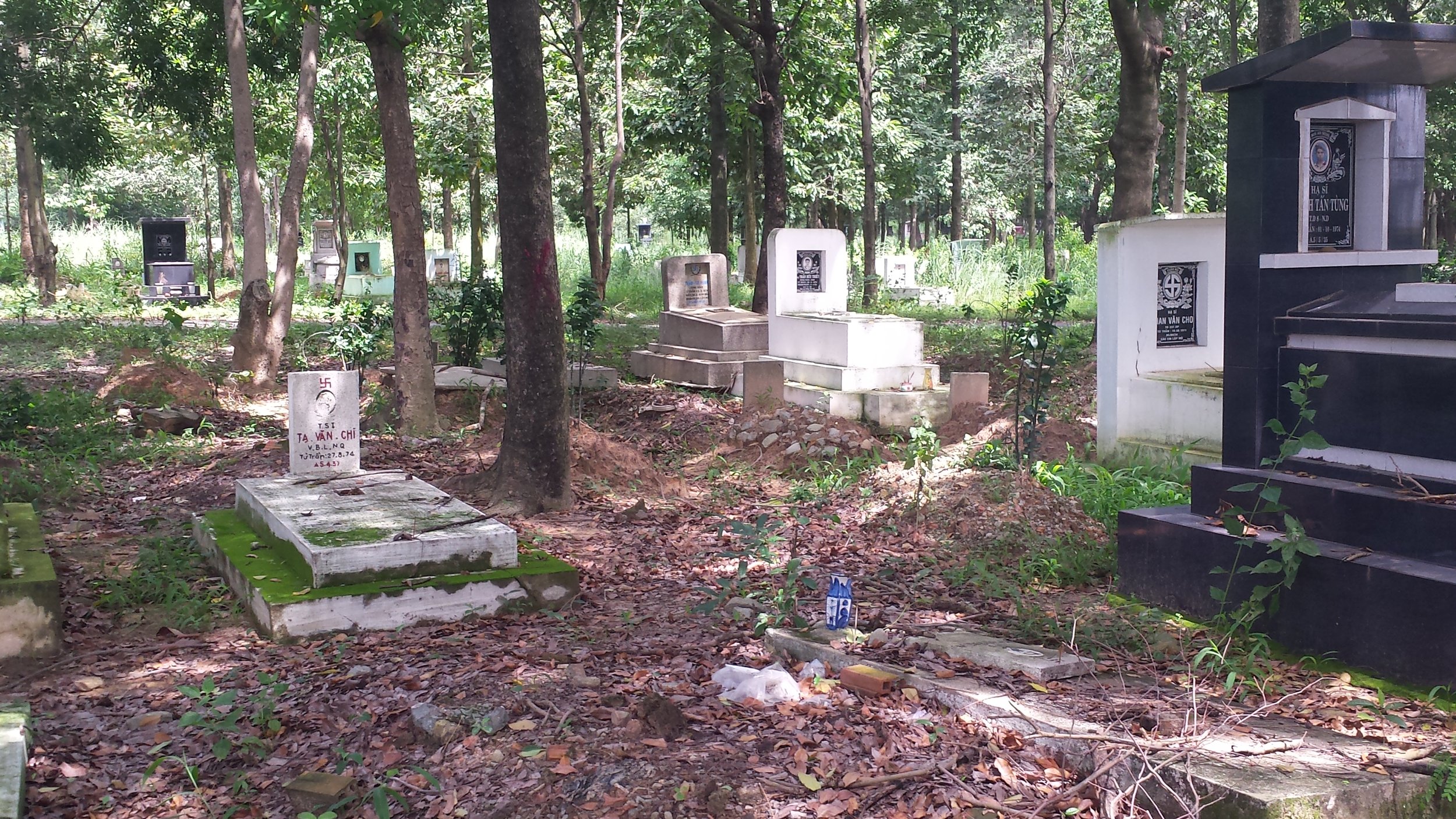Lamentation

After the Great War, European oversaw the construction of vast military cemeteries designed to honor the fallen of both sides. Well-maintained, immaculate, and eye-opening, they provide an insight into the military tradition of honoring war dead.
Maintained graves at the Bien Hoa Military Cemetery.
After Vietnam, this was not the case. The Bien Hoa Military Cemetery in the Republic of Vietnam was the primary cemetery for South Vietnam's military dead. Constructed in 1966, it featured a small temple and a statue of an ARVN soldier in mourning; the "Thuong Tiec" statue. Considered the South Vietnamese equivalent to Arlington National Cemetery, it was an unmistakable sight off of Highway 1. The cemetery was designed to host 30,000 graves, but by the Fall of Saigon in April 1975, only about 16,000 burials had taken place. The graves themselves were either traditional Vietnamese above-ground cement structures or consisted of simple dirt mounds.
Truong Son Martyrs Cemetery.
Following the fall of Saigon in 1975, the communists decided to criminalize depictions of the South Vietnamese regime which did not fit into the idea that they were American lackeys. While other war memorials were being torn down, statues defaced, and propaganda destroyed, the cemetery was closed off to the general population. Graves were razed, dug up, defaced, and the Thuong Tiec statue itself was destroyed. Over the ensuing decades, the jungle overtook much of the cemetery. Its great pathways and vast acreage looked more like a nature preserve than a national military cemetery. It was not until the mid-2000s that civilians were able to access the cemetery, though not without government minders following them around. Today, although some graves have been restored by families, the majority remain in disrepair. Many faces on graves had their eyes scratched out, as if to warn others about what they'll face if buried there.
While the honored dead of the communist Vietnamese lie in carefully arranged rows, in cemeteries of manicured grass and landscaping, the South Vietnamese dead are lucky to have a burial place at all. Mass graves in former reeducation camp sites are still being found, deep in the jungle. Although some are identified, the remains of many of those men and women will never return to their families.
ARVN memorial located in Texas.
To this end, the Vietnamese-American community has taken steps to rectify this erasure of Vietnamese war dead. There is no memorial wall, like in Washington, D.C., and so there is no single "list" of the South Vietnamese men and women who died in the war. Many of those names will be lost to history. Although the Westminster cemetery in California has grown to include many graves of South Vietnamese veterans, there are plans to recreate the Bien Hoa Military Cemetery in San Bernardino county, on a 55-acre plot of land purchased by the Vietnamese diaspora community. Additionally, there are memorials for the ARVN and South Vietnamese scattered across the United States, wherever there are clusters of the Vietnamese diaspora. In Australia, the South Vietnamese are marching in ANZAC Day, and in many of the larger American Memorial Day parades, it's not uncommon to see some South Vietnamese veterans and community members marching.
However, American acknowledgement of the South Vietnamese military dead and veterans tends to be in contexts involving American soldiers. In Arlington National Cemetery, there are South Vietnamese dead—they are buried with the US soldiers they died alongside, but only in situations where the bodies were found together. There are a few plaques honoring the South Vietnamese—but text celebrate their American advisors.
South Vietnamese Airborne Division veterans at Arlington National Cemetery to commemorate the dedication of the Vietnamese Airborne memorial plaque.
The neglect, the supreme insult to the South Vietnamese people—that they aren't even remembered in their home country, remains one of the most profound symbols of communist Vietnamese thinking. That "traitors" and "puppets" shall not be remembered, honored, or respected. How can a people reconcile when the dead cannot be left to rest peacefully? Though more and more overseas Vietnamese have made the decision to return to modern Vietnam, with many resolving to be buried there upon death, it remains that there cannot truly be one Vietnamese people unless the mistakes of the past and the mistakes that continue are resolved.








